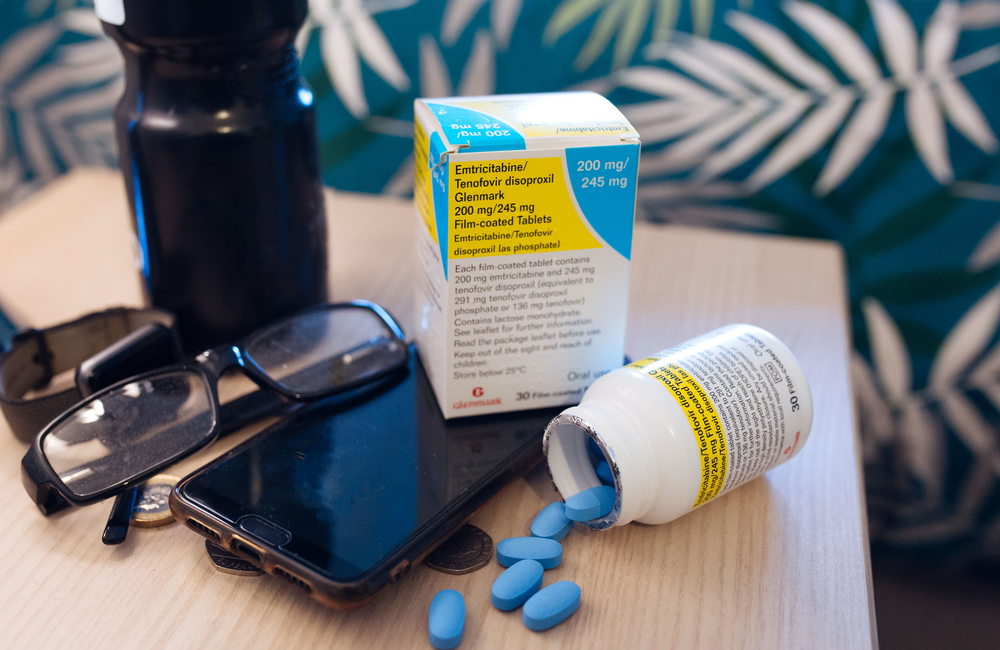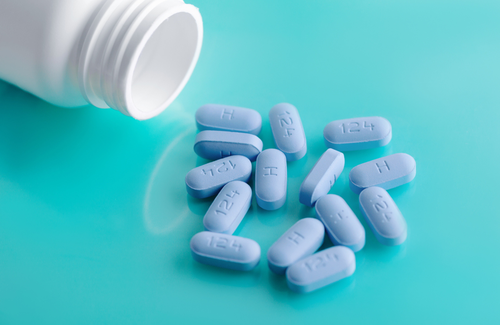
According to a recent study, oral PrEP has a very good renal safety profile even after two years of use. The study also shows that on-demand PrEP has less impact on kidney function than daily PrEP, although this difference is not clinically significant.
The drug tenofovir disoproxil is widely used for oral PrEP in combination with emtricitabine. It is known to affect how kidneys work in a small number of people. What is unclear is whether or not this risk is higher, depending on the PrEP regimen. This brought a French team of researchers to compare the impact of daily or on-demand PrEP regimens on kidney function.
The study included 1,253 participants who started PrEP in the Prévenir cohort in the greater Paris area, between 2017 and 2020. Gay and bisexual men could take PrEP daily or on-demand, as they preferred. While daily tenofovir disoproxil-based PrEP means taking one pill each day, on-demand PrEP (or event-based PrEP) requires planning ahead:
- A double dose (two pills) between 2 and 24 hours before sex,
- a single dose (one pill) 24 hours later, and
- another single dose (one pill) 24 hours after that.
Switches between regimens during follow-up were allowed in the study. To facilitate comparisons of kidney function between regimens, participants were classified in three groups:
- On-demand.
- Daily.
- Switches.
Every three months, the investigators collected data on participants’ dosing regimens. Also, participants were required to produce a serum creatinine test result at each visit. This was essential, as the study’s primary endpoint was the evolution from baseline of estimated glomerular filtration rates.
The estimated glomerular filtration rate, or eGFR, results from an equation that comprises the age, the sex and a serum creatinine test result of a person (glomeruli are networks of blood vessels acting as filters in the kidney). The eGFR shows how fast toxins, including creatinine, are filtered out of the body by the kidneys. Generally, an eGFR result is listed as millilitres per minute per 1.73 m2 of body surface. An eGFR of 90 mL/min/1.73 m2 is considered normal, and rates ranging from 60 to 90 reflect a moderate kidney function. However, an eGFR below 60 is abnormal and may indicate kidney dysfunction.
Results
Of the 1,253 participants, 40% were daily PrEP users, 39% were on-demand PrEP users and 21% switched regimens. Participants were mostly (98%) men who have sex with men and European (85%), with a median age of 34.
The sample’s median eGFR at baseline was 104 (interquartile range 92 – 114). There were 43% of participants who had baseline risk factors for kidney dysfunction: age over 40 and/or a baseline eGFR below 90 mL/min/1.73 m2.
As seen in previous studies, eGFR dropped in the first three months after starting PrEP but increased gradually until month 24, whatever the PrEP regimen. However, by that timepoint, eGFR differences were observed, although they were minor:
- Daily PrEP: – 0.1.
- Switches: + 0.9.
- On-demand PrEP: + 2.7.
Further analyses were based on the mean area under curve (a cumulative measure of eGFR variation from the beginning to the end of the study). This showed the same trend of a higher eGFR in people taking on-demand PrEP, with a similar minor range of differences:
- Daily PrEP: – 1.09.
- Switches: – 0.69.
- On-demand: + 0.18.
The difference persisted when the analysis was adjusted for age and eGFR at baseline: daily PrEP + 0.39 versus on-demand PrEP + 1.47. Finally, in participants with baseline risk factors of kidney dysfunction, the adjusted mean eGFR area under curve was significantly greater among on-demand users (+ 0.21), compared to daily users (– 1.44).
It is worth noting that over a median of 22 months of follow-up, only five PrEP users, evenly distributed between the groups, experienced an eGFR reduction of over 25%. Only two participants stopped PrEP because of a decrease in eGFR and both restarted it later without problems.
Out of the several risk factors (e.g hypertension, age, body mass index, etc.) explored by the researchers, only a daily PrEP regimen, switching regimen, age over 40 and a baseline eGFR of 90 or above were found to be independently associated with a negative eGFR area under curve.
The investigators also found that participants with lower blood concentrations of tenofovir disoproxil (measured with dried blood spots at the 12-month visit) tended to have a positive eGFR area under curve between months 9 and 12. This result is in line with previous studies showing a correlation between the amount of tenofovir disoproxil in the blood and eGFR decline, in both daily and on-demand PrEP users.
Noting that among participants at risk of kidney dysfunction, the area under curve of eGFR variation with on-demand PrEP was positive (+ 0.21), compared to the daily group (- 1.44), the investigators suggest that for gay and bisexual men with risk factors for kidney dysfunction, safety concerns should be taken into account when choosing a PrEP regimen. In settings where tenofovir alafenamide/emtricitabine is not available for PrEP, on-demand PrEP could be considered. (Tenofovir alafenamide is another form of tenofovir that has proven to be as effective for PrEP and to have less impact on kidney and bone health).
Nevertheless, the investigators highlight that over the two-year period of their study, the benefit of on-demand PrEP compared to daily PrEP in terms of renal safety was very small and not clinically relevant. “In our study, the renal safety of PrEP with tenofovir disoproxil/emtricitabine was good, whatever the dosing regimen,” they say.
Liegeon G et al. Impact on renal function of daily and on-demand HIV pre-exposure prophylaxis in the ANRS-PREVENIR study. Journal of Antimicrobial Chemotherapy 77: 3427–3435, 2022.
https://doi.org/10.1093/jac/dkac336
Full image credit: PrEP Emtricitabine/Tenofovir (Generic Truvada) PrEP Treatment Image 1. Image by Doctor 4U. www.doctor-4-u.co.uk Available at www.flickr.com/photos/144891950@N08/48663489683/ under a Creative Commons licence CC BY 2.0.

